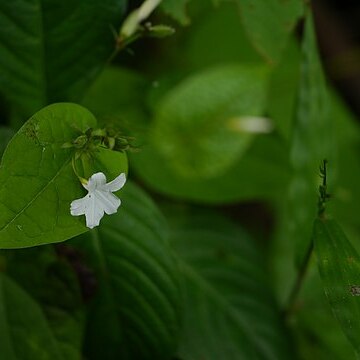Herbs annual; indumentum yellowish to silvery. Stems glabrescent. Petiole 2.9-7.7 cm; leaf blade deeply cordate, 6-16.7 ´ 3.3-9.4 cm, abaxially puberulent to tomentellous, adaxially strigose. Panicle 13-45 cm; lowermost bracts cordate, prominently veined in fruit; bracteoles 2, minute scales. Pedicel 4-7 mm. Sepals lanceolate-linear, equal, 1-2 mm, glabrous to silvery or golden pubescent abaxially. Fruiting calyx reflexed, tan to purplish; sepals spatulate to oblanceolate, flat or slightly concave, equal, 0.9-1.4(-1.8) cm ´ 2.5-4(-5) mm, puberulent or glabrous abaxially, glabrous adaxially, apex rounded-obtuse, apiculate. Corolla white, yellow in tube, funnelform, (7-)8-11 mm; limb (0.6-)0.8-1.2(-1.3) cm in diam., 5-parted. Stamens included, unequal, 1.5-2.5 mm; filaments pilose basally. Disc absent. Pistil included; ovary ovoid. Stigma ellipsoid to clavate, apex emarginate. Fruit tan, sometimes brown-purple striate, slenderly ellipsoid-obovoid, 5-7(-9) ´ 3-4(-5) mm, glabrous, apex acute or apiculate. Seed reddish to dark brown, ellipsoid-globose, 3-5 ´ 2.5-4 mm. Fl. summer-fall, fr. fall-winter. 2n = 28.
More
A twining herb. It usually grows 2-3 m long but can be much longer. The stems are angular and initially hairy. The leaf stalks are 3-7 cm long. The leaf blades are deeply heart shaped and 6-17 cm long by 4-9 cm wide. It is paler and hairy underneath. The flowering stalks occur singly or in pairs. They can be 13-45 cm long. The flowers are funnel shaped and usually white. The fruit is light brown and narrowly oval.
It is a tropical plant. It grows in open sites in forest and scrub. It grows between 1,000-2,000 m above sea level. In Sichuan and Yunnan.

